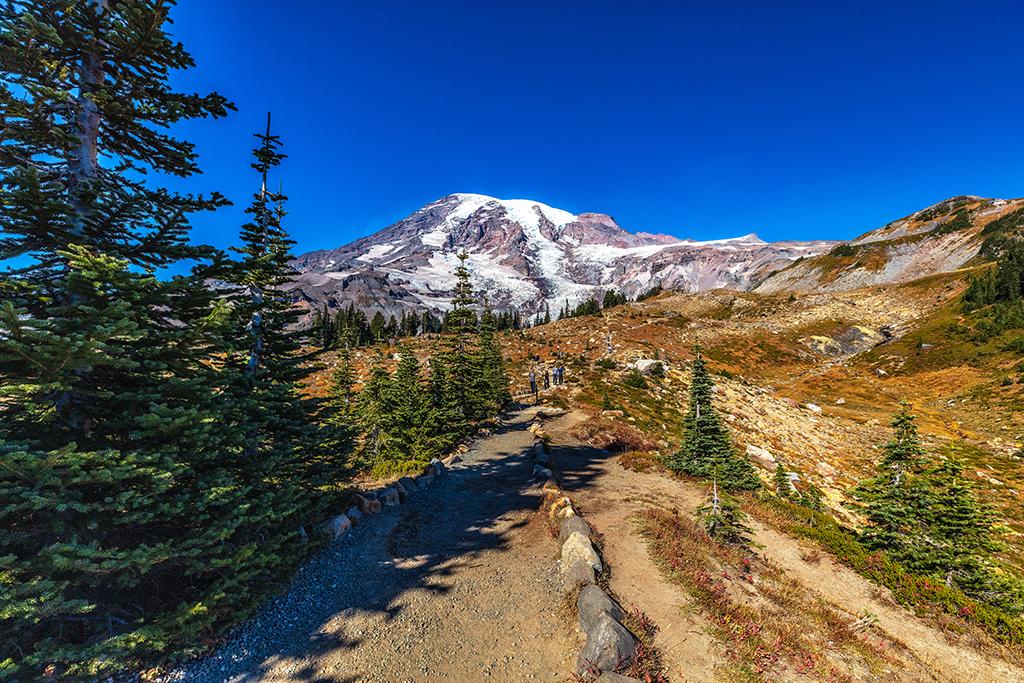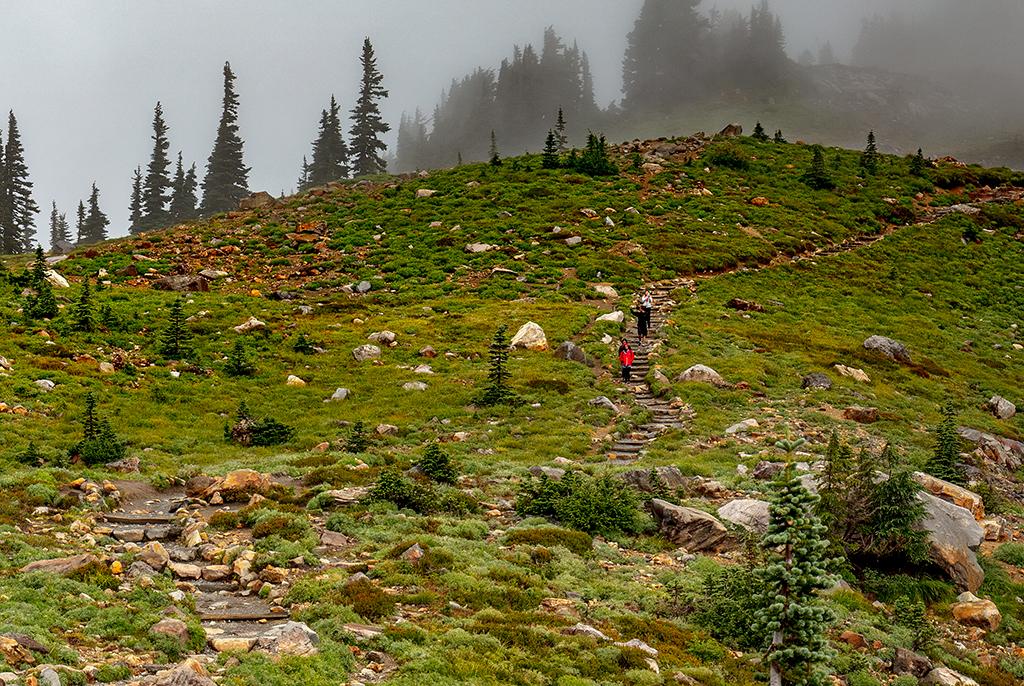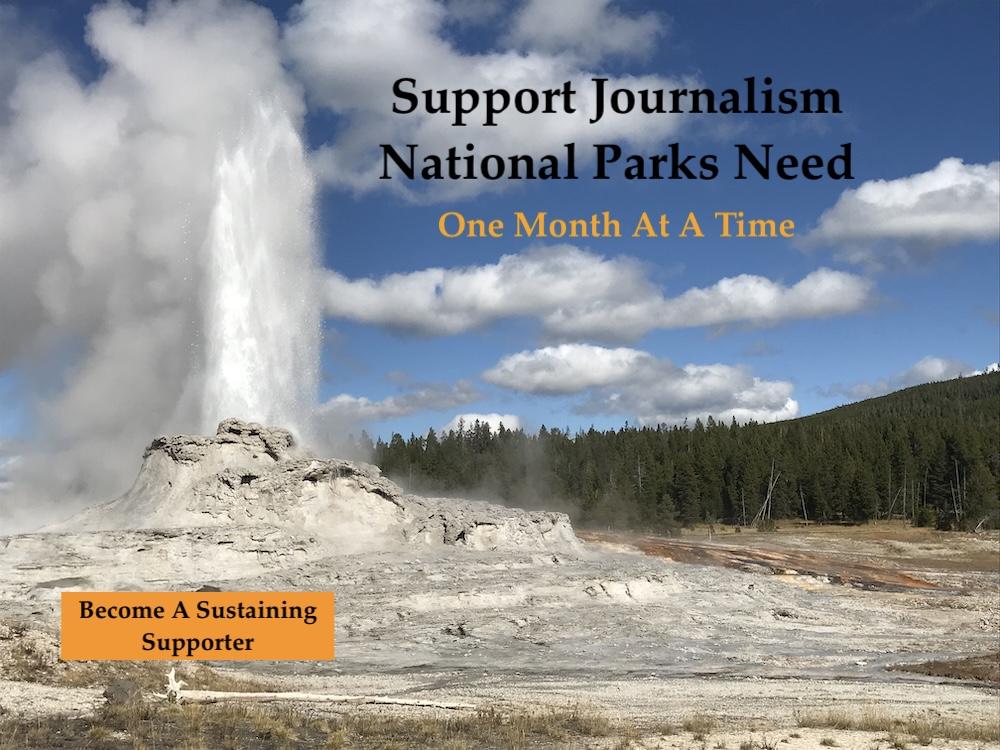
"The most luxuriant and the most extravagantly beautiful ...," Mount Rainier National Park / Rebecca Latson
Recently, I wrote about the grand reopening celebration of the Paradise Inn and the Inn’s newly-renovated Annex building in Mount Rainier National Park. I met personalities from the National Park Service, the Pew Trust, Washington’s National Park Fund, National Parks Conservation Association, and the Northwest Youth Corps. This renovation celebration was a big deal to those representatives as well as to the general public (you and me), and not only for the historic significance (the Paradise Inn and Annex are both National Historic Landmarks).

The Paradise Inn and Annex, Mount Rainier National Park / Rebecca Latson
Restoration of the Annex building cost $24.5 million. That amount cut $5 million from the park’s $186 million deferred maintenance tab. Yes, Mount Rainier National Park has a maintenance backlog that is part of the entire National Park System’s nearly $12 billion backlog. Every little bit counts when it comes to national park preservation as well as improved visitor experiences, and this Annex renovation chipped away a tiny portion from that backlog.
Let’s talk about this term “deferred maintenance.” Prior to the opening ceremonies, I conversed with park Superintendent Chip Jenkins, who told me he thought deferred maintenance was a “dry term” that didn’t really register with the general public.
“People hear that term, acknowledge it, then put it to the side without further thought. The key to getting the public more actively aware of any national park’s maintenance backlog is to directly demonstrate how it affects the quality of their own national park experience," said Jenkins. "The Paradise Inn Annex renovation project provides an excellent example of improved infrastructure and updated safety controls creating more comfortable conditions for many of the park’s 1.5 million annual visitors.”
You’ve read previous Traveler articles about the National Park System’s maintenance backlog. These articles are filled with facts, numbers, photos, and links to other stories. In this article, I’m trying to put a more personal face to the issue of deferred maintenance and I’m using Mount Rainier National Park and its projects as examples of how reducing that backlog will, indeed, affect your visit.
For instance, in addition to the Annex restoration, Mount Rainier National Park is also planning to “rehabilitate the Paradise trail network and restore Paradise Meadows.” How many of you have hiked the Paradise trail system? It’s a pretty sweet network of trails allowing access to fantastic close-up views of Nisqually Glacier, wildflower-carpeted meadows, waterfalls, and a glacier-frosted volcano towering over it all. And, don't forget, this trail system also provides a starting point for those climbers seeking to summit The Mountain. But, there are some rough spots created by snowmelt drainage eroding the soil and moving rocks that have fostered “shortcuts” off the established trails and across the fragile meadow environment. Mount Rainier’s planned re-alignment and reconstruction of trails will meet the needs of the visitors and improve their access to scenic spots while protecting the Paradise meadows and decreasing that deferred maintenance.

Looking down the winding trail at Paradise, Mount Rainier National Park / Rebecca Latson
I also spoke with Jim Ziolkowski, the park’s Trails/Roads/Auto Shop supervisor, who told me they have put $1.5 million into the Paradise trails during the past six years.
“Two projects of about $500,000 and $700,000 put a dent on the very lower end of things, but up above, on the higher Skyline trail, it’s a mess because of how the system drains. It’s hard to piecemeal it, doing small sections at a time. Up to now, we have just done bandaids," said Ziolkowski. "How do we accommodate the people and do something in a historic way to be respectful of the district, and then how do we create a sustainable trail system to allow the meadows to live? In addition to those people who want to see the meadows and wildflowers, we want to also accommodate the mountain climbers’ needs as well. Hikers, whether they like to admit it or not, like really nice dry trails. We are trying to assist the snow-travel-to-tread-travel nexus, so people going over snow won’t find themselves off the trail and on the meadow. What we need to do is watch the snowmelt patterns and try to design a system so that when things melt, one of the first things to melt out are the trails. We are trying to establish where (hikers) should go, and we’ll start doing that in early July.”

Hiking the Skyline trail on a sunny day, Mount Rainier National Park / Rebecca Latson

Hiking the Skyline trail in all kinds of weather, Mount Rainier National Park / Rebecca Latson

The Alta Vista trail, Mount Rainier National Park / Rebecca Latson

Hiking the trails in Paradise, Mount Rainier National Park / Rebecca Latson
Improving the Paradise trail system to make hiking easier for visitors, restoring and protecting fragile meadow environments to encourage growth and regrowth, and enhancing guest comfort at the Paradise Inn are deferred maintenance projects influencing each of us who visits Mount Rainier on a personal level.
What other deferred maintenance undertakings are there at Mount Rainier that will personally affect you? Here’s something you might not think much about, but which can definitely shape your visitor experience: wastewater treatment. I’m talking sewage. Those of you who visited national parks during the most recent government shutdown will probably have experienced the pitfalls of this issue. Mount Rainier National Park wants to rehabilitate their entire wastewater treatment system, the funding of which they are still working on in order to proceed with development of this project.
Just before the Grand Reopening Ceremony, I sat down for a chat with Melinda Simpson, operations manager for concessionaire Guest Services, who has worked there since 1973. “I’ve seen a lot of changes in people’s attitudes and what they want out of a national park. They have definitely become more health-conscious, for one thing – the Inn used to have a cigarette machine back in the day,” she chuckled. We agreed that people are now much more educated as to what they can expect staying in an historic lodge, and definitely more concerned about a national park’s environment. They want that beauty and park adventure they experienced, today, to be around for their children and grandchildren in even better condition.
Yes, national park deferred maintenance is about roads, bridges, buildings, trails and infrastructure. Each, on its own, sounds pretty dry. Just remember, every asset of the National Park System’s $12 billion maintenance backlog will affect you and your park experience, no matter how dry the terms sound. The plans Mount Rainier National Park has for restoration and rehabilitation of Paradise’s meadows and trail system, as well as upgrading their wastewater system, in addition to other as-yet named improvement projects, put a more personal face explaining how this backlog reduction will affect you and yours, now and for the future.

A window onto Paradise, Mount Rainier National Park / Rebecca Latson




 Support Essential Coverage of Essential Places
Support Essential Coverage of Essential Places







Comments
I really appreciate you going in depth on one of the real issues of our times for the National Park System. It is crucial that we tackle this problem and tough choices will need to be made. Hats off to you and the team at Mount Ranier for making numbers come to life.
Pew just released another report https://www.pewtrusts.org/en/research-and-analysis/articles/2019/05/24/r...
I think some of Pew's ideas are worth pursuing and might run counter to the grain but I hope they will get heard by the NPS/DOI and be considered. There are a lot of common sense solutions out there but the one thing needed most is a leadership team at all levels willing to make decisions to fund and prioritize projects and parks rather than fund a race to mediocrity. It can be done!
Rebecca,
Excellent writing here on such an important topic. Bringing this to the attention of more people is of utmost importance. And you've made it even more impacting with the use of your excellent images. Thank you!